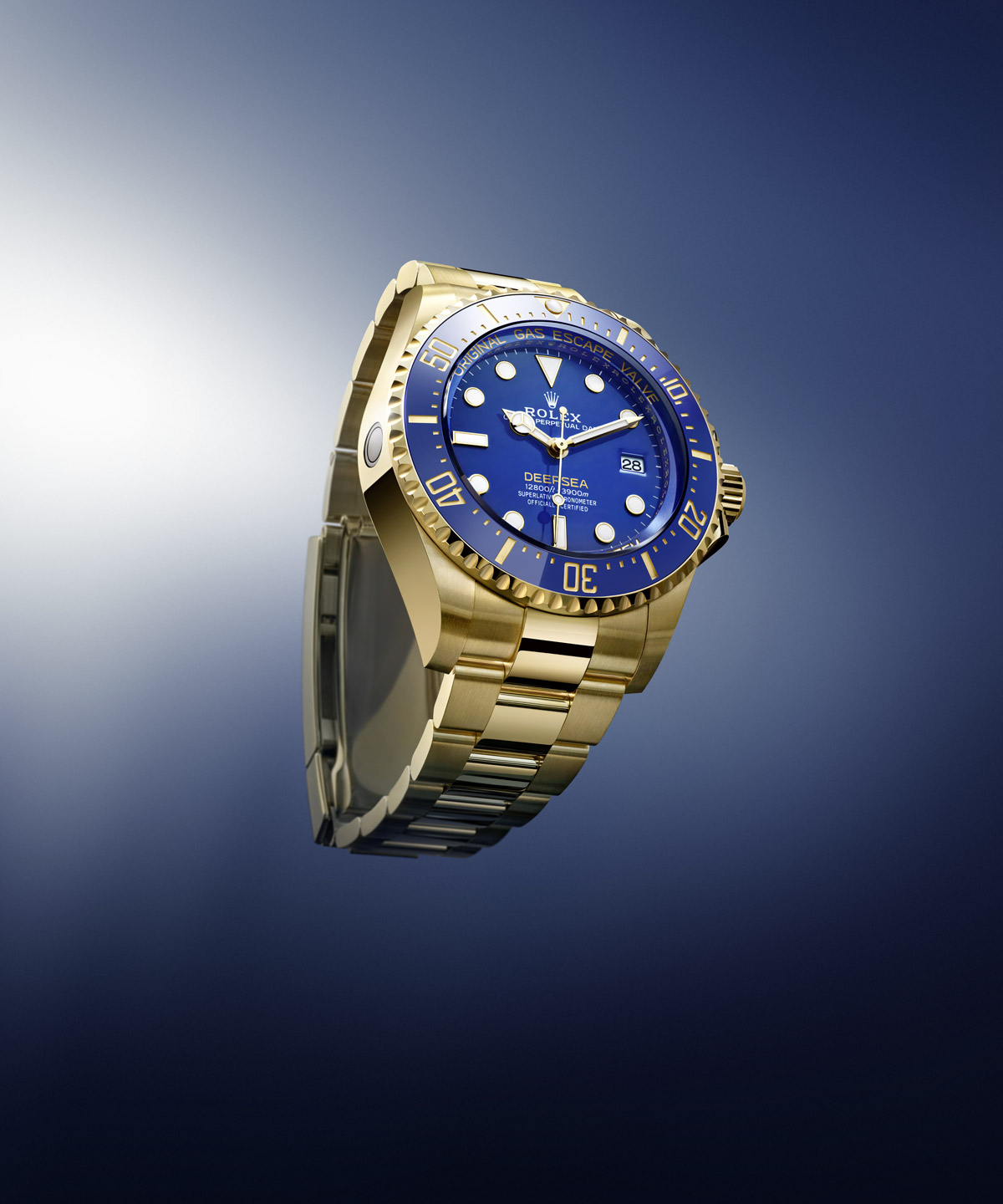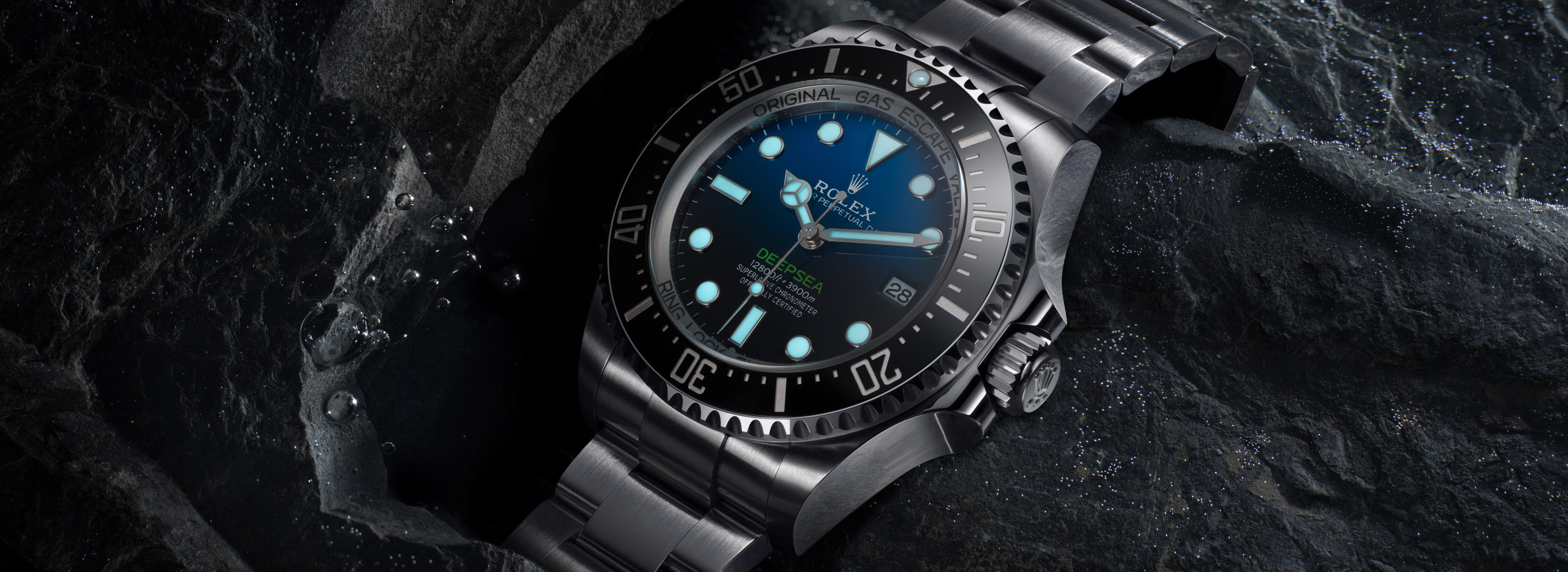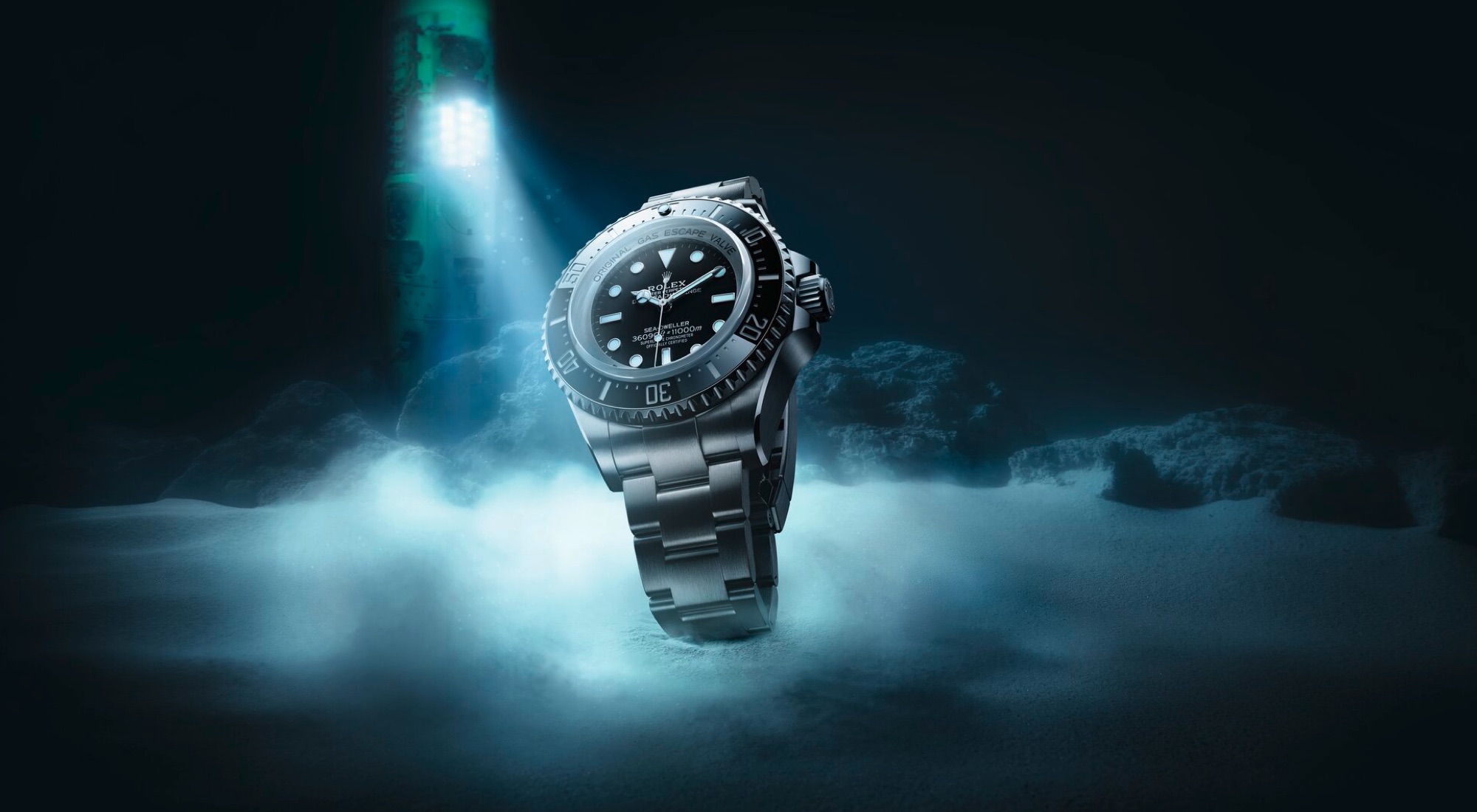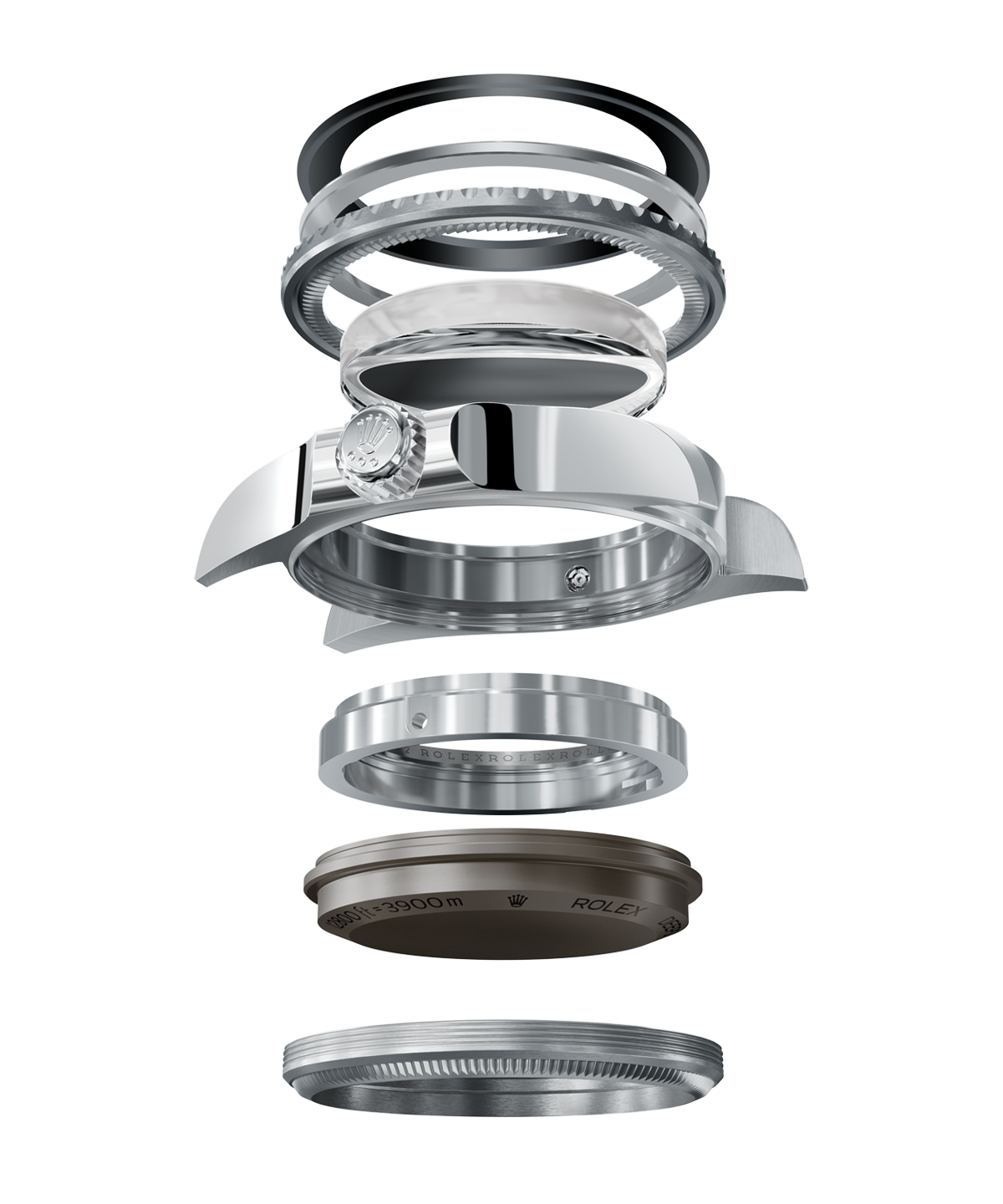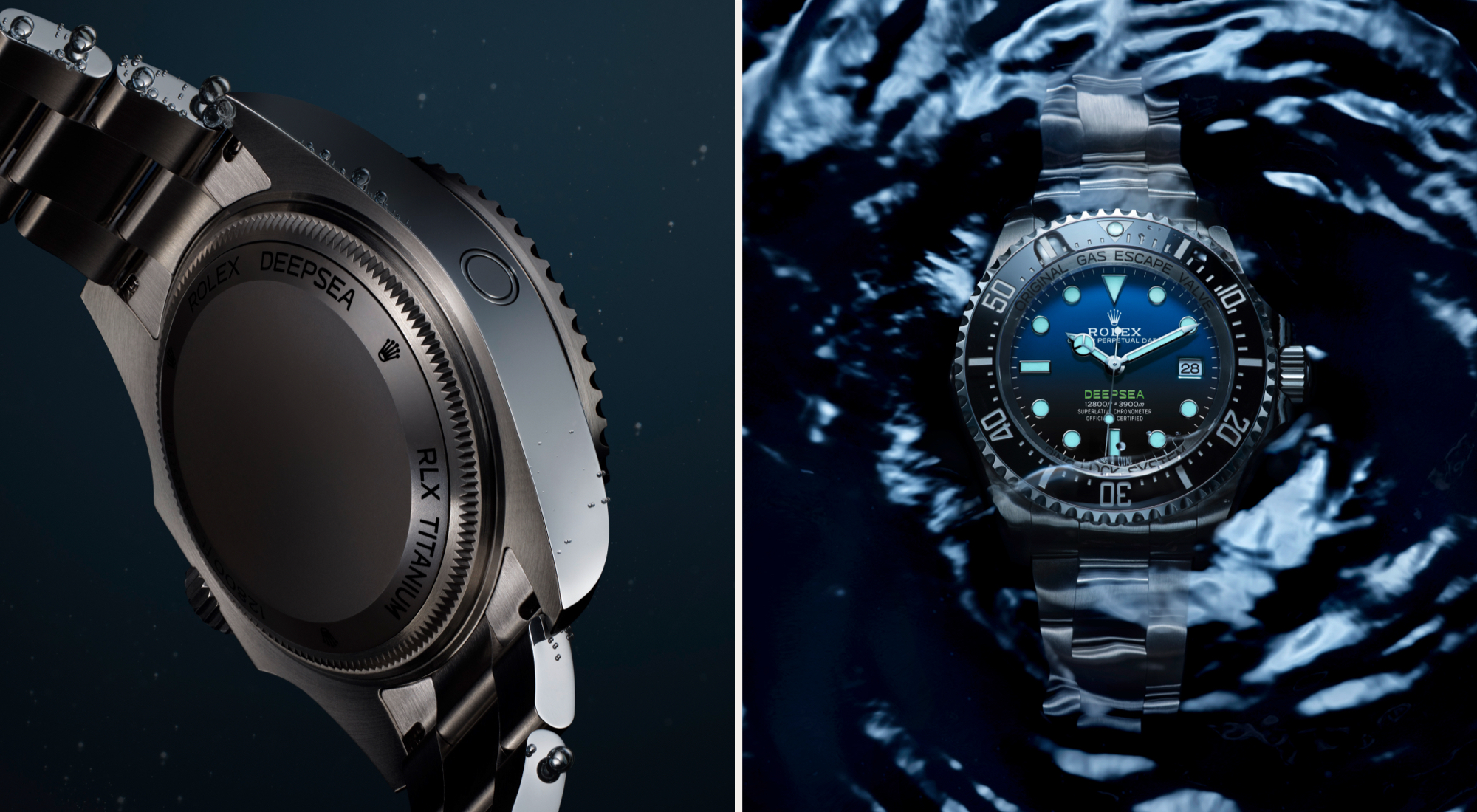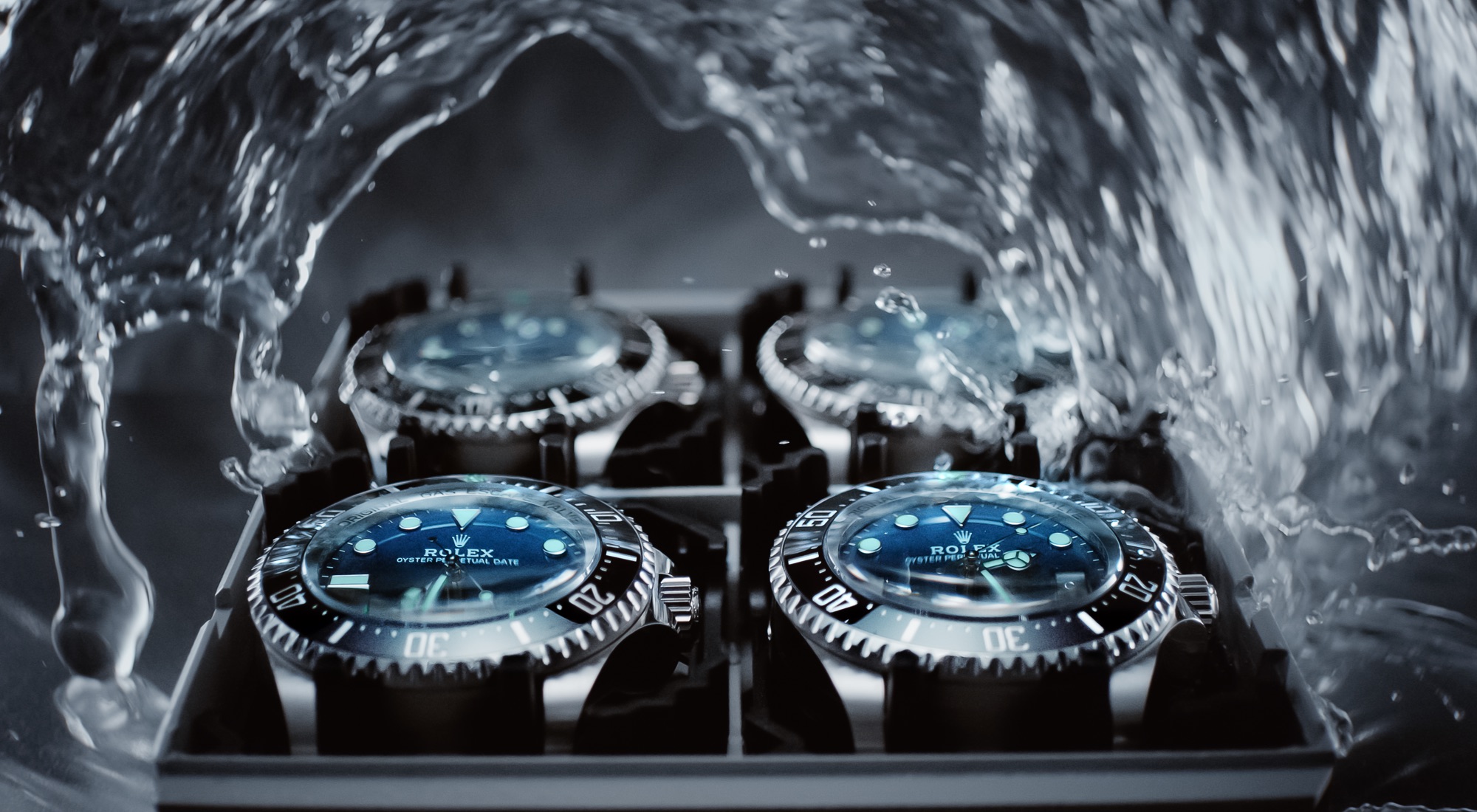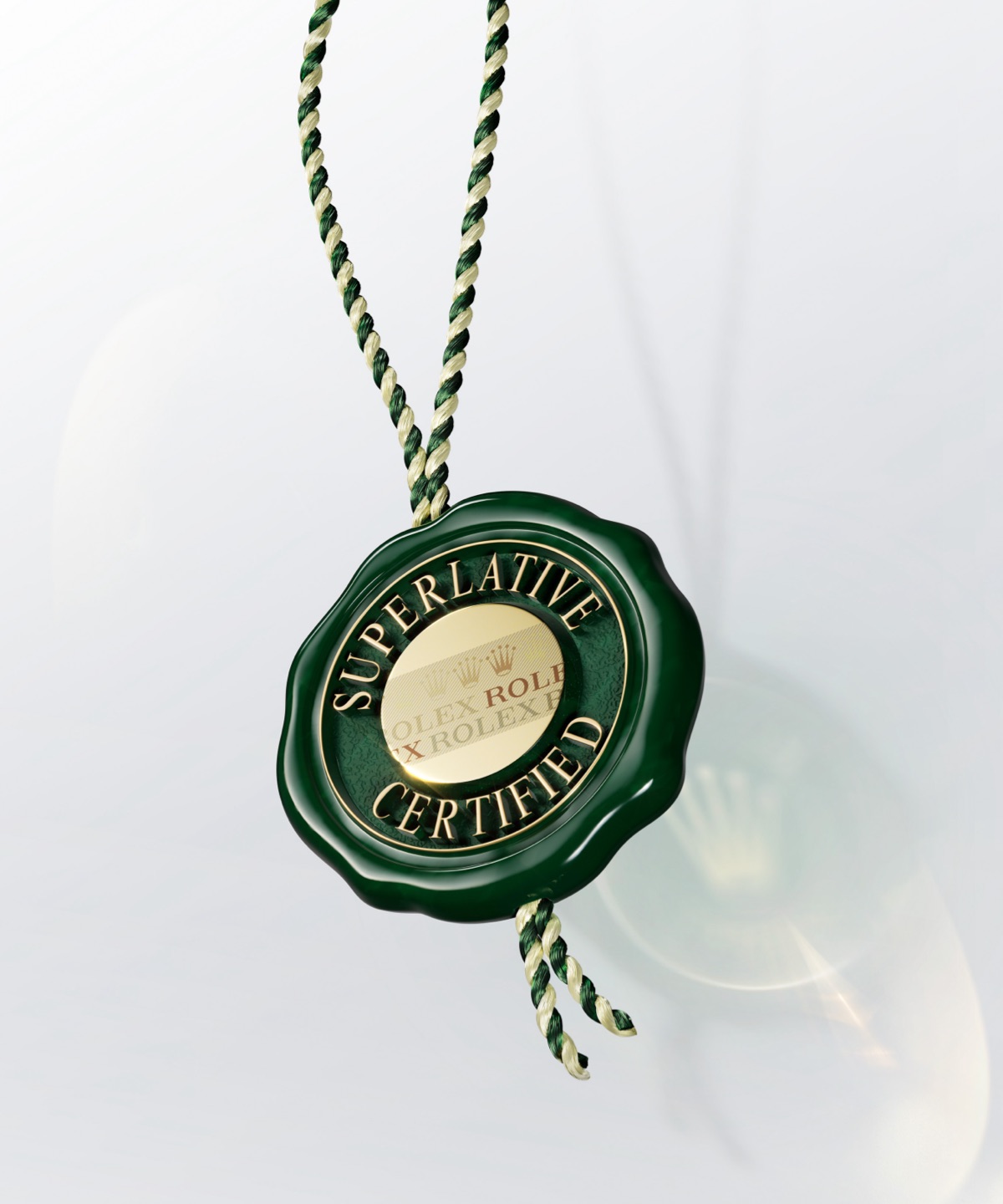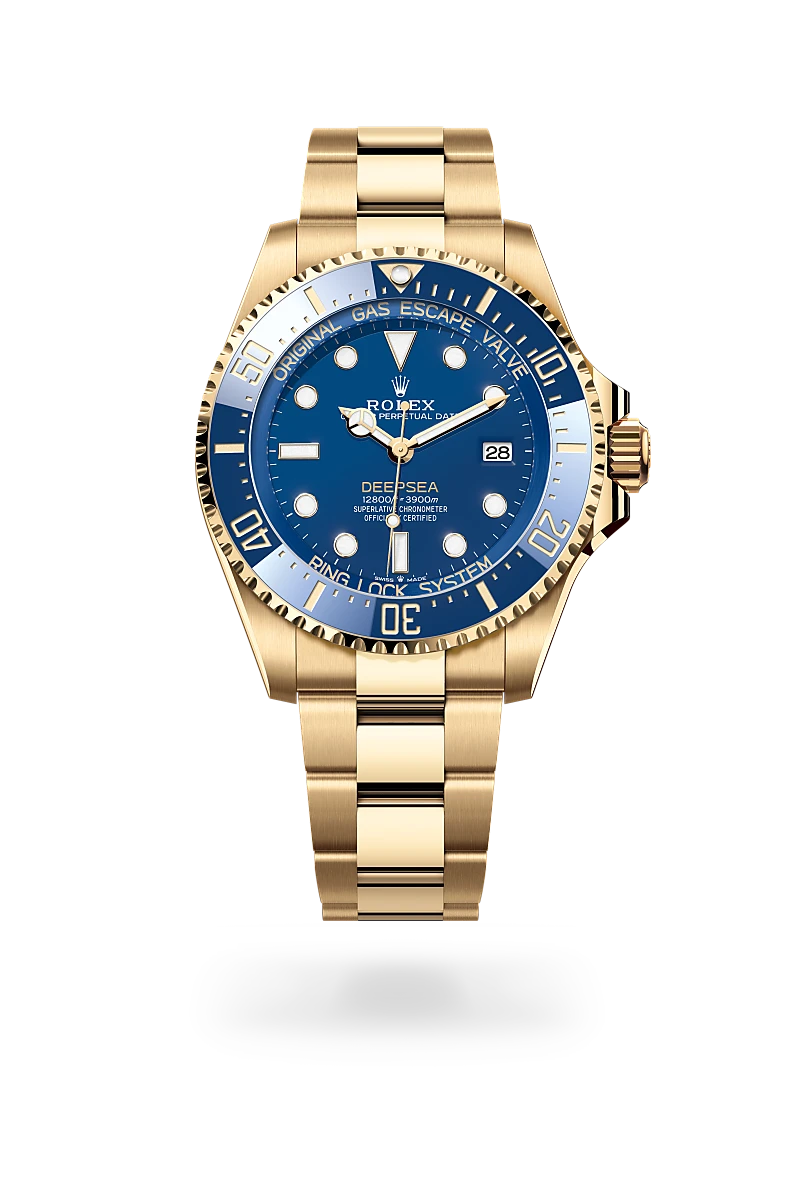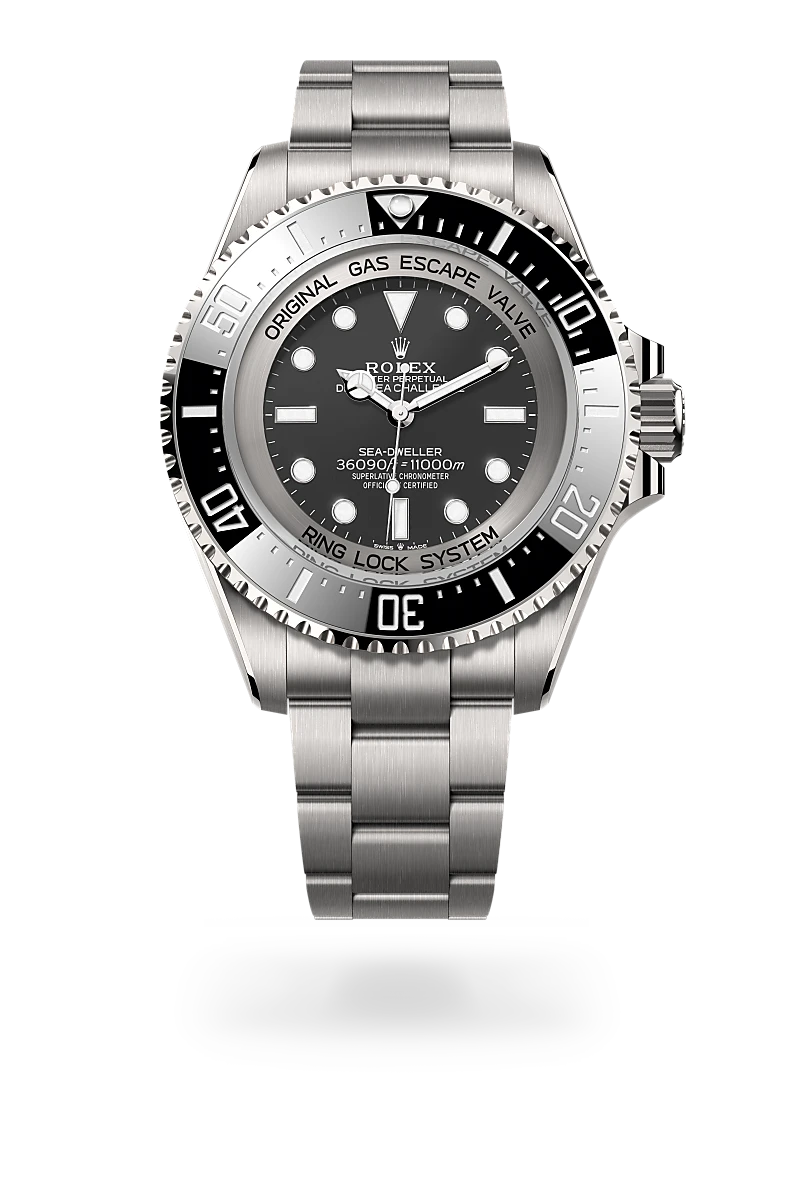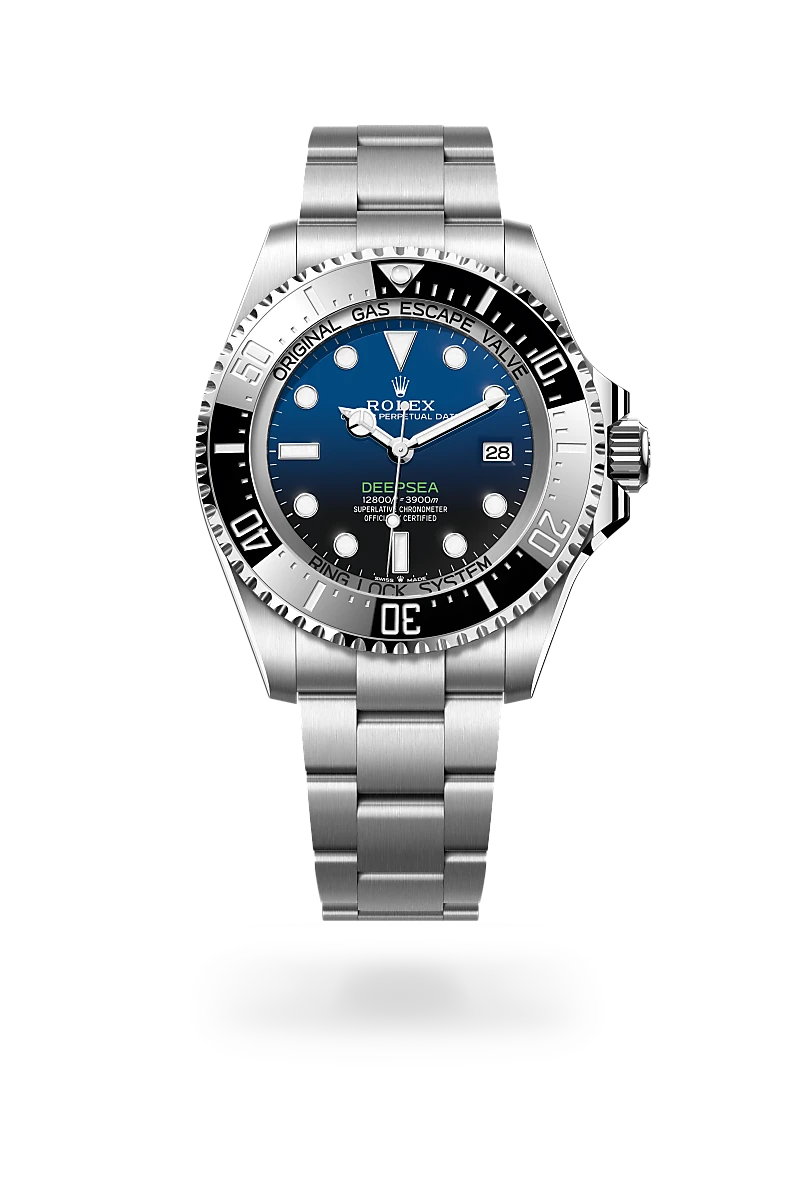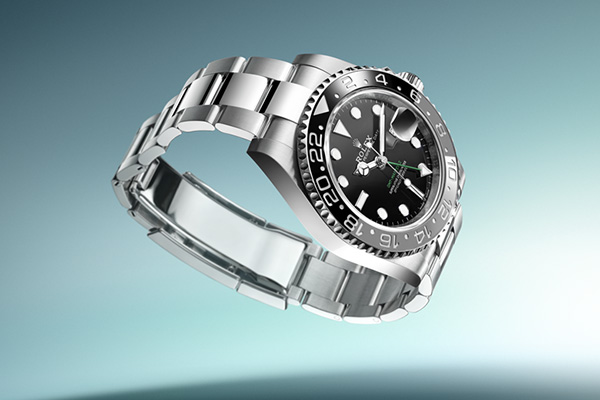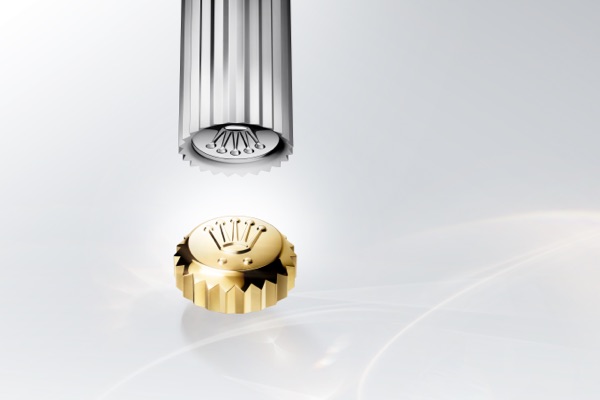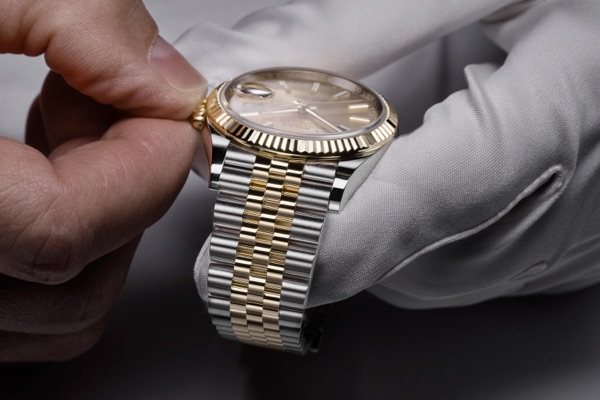Helium escape valve
The Oyster case of both models is also equipped with the helium escape valve, patented in 1967. This safety valve works to protect Rolex divers’ watches created for great depths by allowing excess pressure built up inside the watch case to escape during a diver’s decompression phase in a hyperbaric chamber – a process inherent to saturation diving – without compromising the waterproofness of the watch.
Stringent waterproofness tests
In deep-sea diving, absolute reliability and security are of the essence. The waterproofness of every Rolex Deepsea and Deepsea Challenge watch is tested with a safety margin of 25 per cent, in accordance with the standard in effect for divers’ watches.
The Rolex Deepsea, guaranteed waterproof to a depth of 3,900 metres, is thus effectively subjected to the pressure exerted at 4,875 metres deep, while the Deepsea Challenge, waterproof to 11,000 metres, is subjected to the pressure exerted at 13,750 metres deep.
For these stringent tests, the brand developed a special hyperbaric tank for the Rolex Deepsea and an ultra-high-pressure (UHP) tank for the Deepsea Challenge in conjunction with Comex (Compagnie Maritime d’Expertises), the world-renowned French company specializing in underwater engineering and hyperbaric technologies.



